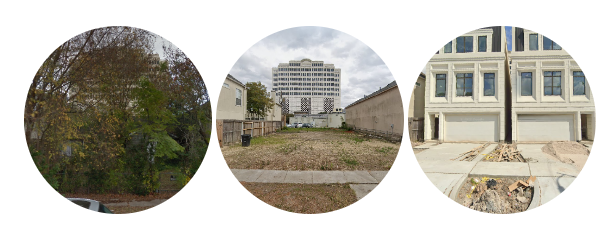Physical Address
304 North Cardinal St.
Dorchester Center, MA 02124
Physical Address
304 North Cardinal St.
Dorchester Center, MA 02124

Updated 1/11/24 to add 3 new papers, Wegmann, Baqai, and Conrad (2023), Dobbels & Tavakalov (2023), and Hamilton (2024). The original post was published 3/14/23. A concerted research effort has brought minimum lot sizes into focus as a key element in city zoning reform. Boise is looking at significant reforms. Auburn, Maine, and Helena, Montana, did away with minimums in some zones. And even state legislatures are putting a toe in the water: Bills enabling smaller lots have been introduced [in 2023] in Arizona, Massachusetts, Montana, New York, Texas, Vermont, and Washington. The bipartisan appeal of minimum lot size reform is reflected in Washington HB 1245, a lot-split bill carried by Rep. Andy Barkis (R-Chehalis). It passed the Democratic-dominated House of Representatives by a vote of 94-2 and has moved on to the Senate. City officials and legislators are, reasonably, going to have questions about the likely effects of minimum lot size reductions. Fortunately, one major American city has offered a laboratory for the political, economic, and planning questions that have to be answered to unlock the promise of minimum lot size reforms. Problem, we have a Houston Houston’s reduced minimum lot sizes from 5,000 to 1,400 square feet in 1998 (for the city’s central area) and 2013 (for outer areas). This reform is one of the most notable of our times – and thus has been studied in depth. For a summary treatment, see Emily Hamilton’s 2023 case study. To bring all the existing scholarship into one place, I’ve compiled this annotated bibliography covering the academic papers and some less-formal but informative articles that have studied Houston’s lot size reform. Please inform me of anything I’m missing – I’ll add it. Political economy of Houston’s reform M. Nolan Gray & Adam Millsap (2020). Subdividing the Unzoned City: An Analysis […]

It’s an understatement to say that zoning is a dry subject. But in a new video for the Institute for Humane Studies, Josh Oldham and Professor Sanford Ikeda (a regular contributor to this blog) manage to breath new life into this subject, accessibly explaining how zoning has transformed America’s cities. From housing affordability to mobility to economic and racial segregation to the Jacobs-Moses battle, they hit all the key notes in this succinct new video. If you need a go-to explainer video for the curious new urbanists, this is the one. Enjoy!